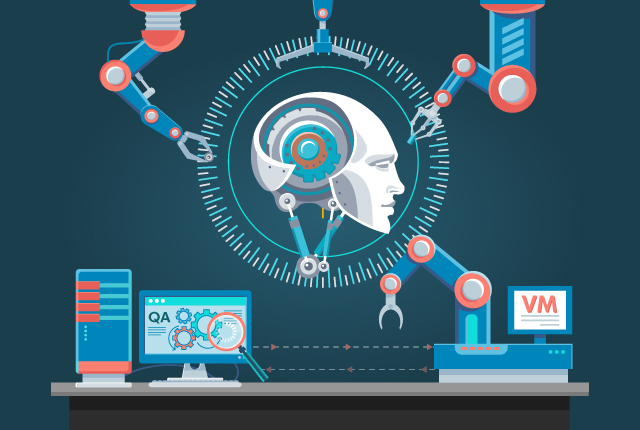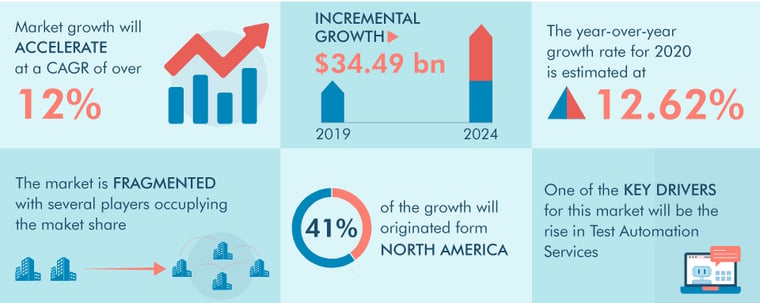
In the new era, Automation testing is expected to play a crucial role in software development and quality assurance processes in the coming years. In 2024, it is anticipated that automation testing will become even more prevalent and sophisticated because of advancements in technologies like artificial intelligence and machine learning are likely to enhance automation testing capabilities further. AI-powered testing tools can analyze vast amounts of data, identify patterns, and generate test cases, thereby increasing the efficiency and effectiveness of testing processes.

However, the question still stands: Is virtual machine automation just another fad, or is virtual machine testing worth the investment?
According to our experts yes, it is. This evolution not only resolves many challenges in setting up test infrastructure within your CI/CD pipeline integration, but it also allows your team to focus more on implementing best testing practices for your release cycle. It provides a flexible, reproducible, and scalable environment for testing software applications.
This blog will help you to answer the most common questions about virtual machines while performing automated testing, which mainly include:
- What are virtual machines?
- How do virtual machines work for Automation testing?
- Do I face any challenges while using a virtual machine?
- What are the benefits of virtual machine automation?
Let’s discuss them one by one:
What are Virtual Machines?
Virtual Machines (VMs) – sometimes called virtual PCs, are software emulations of physical computers that can run multiple operating systems and applications within a single physical server or computer. They provide a way for QA teams to create and manage multiple isolated environments, each with its own operating system and resources, on a single physical machine.
Applications and web browsers run on a virtual machine as if they were installed and accessed on their predetermined physical system, allowing testers to execute application tests across various platforms from one computer.
How do Virtual Machines Works for Automation Testing?
That means testers can run their test cases across all required systems, which could be time-consuming when this task is done manually on one machine.
It further expedites the testing process by running test automation across computer systems and operating systems simultaneously. Your team receives accurate test results in half the time, so that deployments are never delayed.
Do I face any challenges while using a virtual machine?
Our experts says that sometimes you may face few challenges like Performance, Configuration management, Resource Allocation, or Network connectivity. However, with proper planning, configuration, and management, these challenges can be mitigated to ensure successful automation testing using virtual machines.
What Are the Benefits of Using a Virtual Machine for Automation Testing?
Every team aims to reduce their release cycle costs. Fortunately, virtual machine automation testing saves money when setting up a test infrastructure and provides additional value to your QA testing team and development cycle.
Below are eight reasons why the QA team should consider adding virtual machine automation:
- Virtual Testing Lab on a Single Server: Automated testing for web applications can easily be performed without depending on back-end configurations. This reduces the time spent on manual configuration and decreases the chances of errors. For example, widely used healthcare applications and enterprise management solutions require validating the app’s compatibility with different configurations. Because setting this up on a physical machine isn’t the ideal approach, virtual machine automation can help you to create multiple virtual machines on a single server.
- CI/CD Pipeline Compatible: A great way to integrate continuous integration testing and collaboration is by including virtual machine automation into your approach. CI/CD uses the concepts of virtual machine testing and containerization, so you can easily apply automation testing with your CI/CD pipeline integration.
- Improved Test Coverage: VMs enable you to test your application on various operating systems and hardware configurations without requiring multiple physical machines. This helps ensure broader test coverage and identify potential compatibility issues. Each VM provides a clean and isolated testing environment, ensuring that tests run consistently and are not affected by changes or conflicts in other testing environments.
- Virtualization Over the Cloud: Virtualization over the cloud on virtual machines is a popular approach for automation testing. It offers a flexible and scalable solution where software applications can be tested on multiple operating systems and configurations without the need for physical hardware. Third-party apps and services like BrowserStack and AWS have become increasingly reliable and cost-effective options to be used in VMs.
- Increased Security: Due to security concerns, you can setup an application and database server on an isolated network to eliminate any chances of network security failure. For such requirements, you can set up a test environment on virtual machines that is created on a separate network and isolated from your regular network.
- Improved Collaboration: Teams can work collaboratively on virtual machines over the cloud, regardless of their physical location. Automation scripts, test results, and configurations can be easily shared and accessed by team members, promoting collaboration and efficient debugging.
- Increased Efficiency and Speed: Virtual testing environments will enable you to execute your automation tests on multiple parallel virtual machines. This will give you quick testing results and accelerate your release cycles. Once a VM is configured for a specific test environment, it can be easily reused for subsequent tests, saving time and effort compared to manual setup each time.
- Low Operational and Maintenance Cost: Virtualization eliminates the need for physical hardware, reducing hardware costs and maintenance expenses. Organizations can utilize cloud-based virtual machines on-demand and pay only for the resources they use.
Before implementing virtualization, you should first analyze your testing requirements and the feasibility of using virtual machines. Running parallel virtual machines during testing and applying the right testing tools for virtualization are two ways to further accelerate virtual machine automation in your QA testing practices.
Still unsure how to apply virtual machine testing to your development cycle? Partner with a QA services provider like QASource to keep your release cycle on track. Our team of testing experts specializes in automation testing and security testing, with years of experience in implementing test automation within virtual machine testing. Let our experts guide your team through the process of creating a virtual test lab so that you develop the right procedures for QA testing. Get in touch with a QASource expert today.


